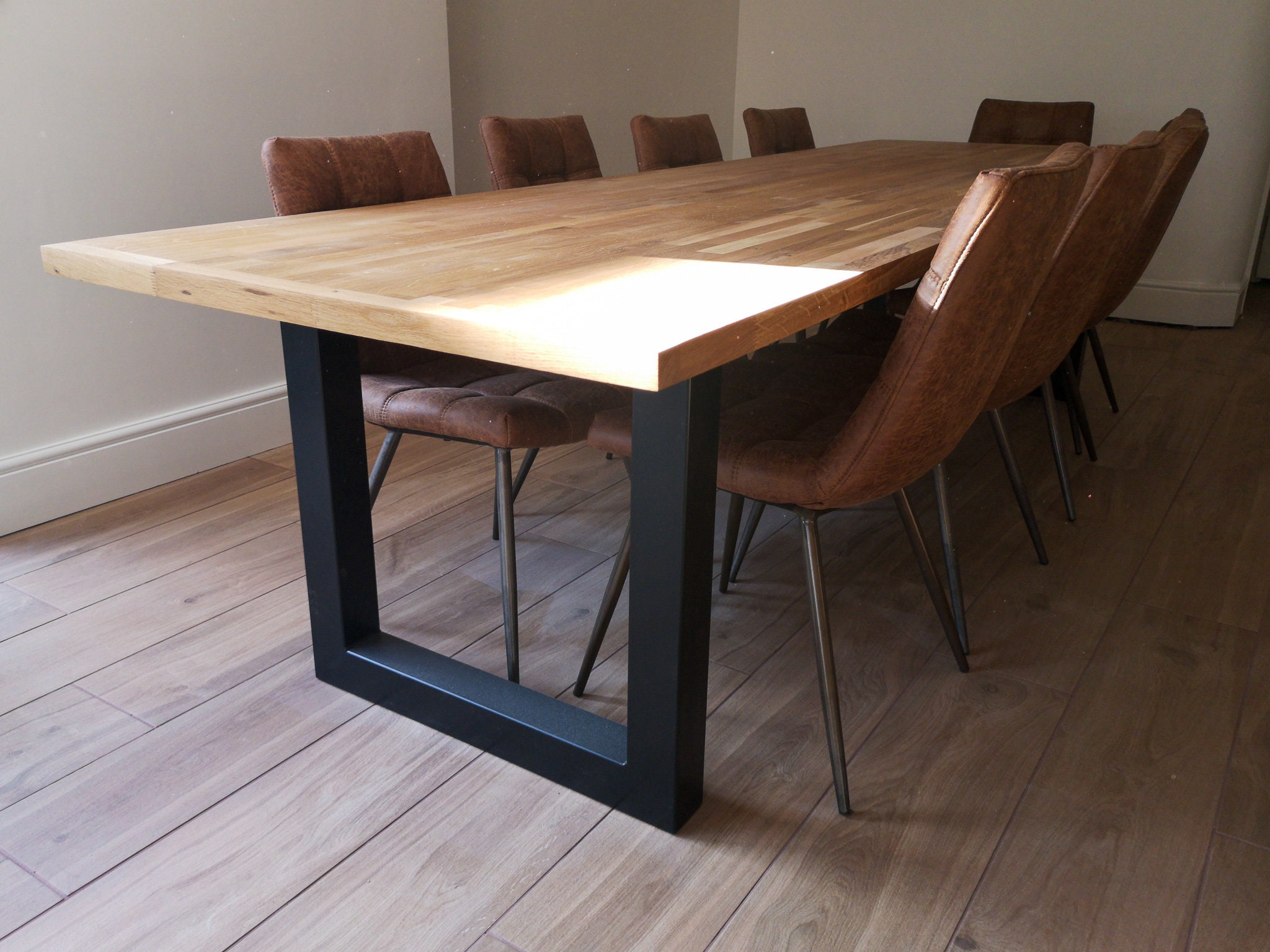The Ultimate Overview to Selecting Durable Dining Room Table Legs
The Ultimate Overview to Selecting Durable Dining Room Table Legs
Blog Article
A Detailed Check Out Table Leg Styles: Discovering the Suitable Match
Picking the ideal eating table leg design is vital for both visual allure and practical performance. Traditional four legs offer classic beauty and security, while the pedestal base supplies raised legroom and a contemporary look. For those with bigger tables, trestle legs ensure strong assistance, whereas hairpin legs introduce a mid-century contemporary vibe with their minimal design. The x-shaped legs mix contemporary style with boosted stability. Each of these alternatives brings one-of-a-kind benefits, making the selection greater than simply an issue of preference. Check out further to discover which design completely complements your eating area and way of living.
Typical Four Legs
Amongst the different types of eating table leg styles, the traditional four-leg design remains a timeless option for lots of homes. This classic configuration supplies a harmonious blend of performance and aesthetic appeals, making it a perennial fave. Four legs provide balanced support, ensuring the table stays secure and qualified of birthing substantial weight. This is particularly helpful for homes that often hold big gatherings or utilize their dining table for multiple purposes, such as job or crafting.
From a visual viewpoint, the traditional four-leg style can be quickly adjusted to various indoor designs. Whether crafted from wood, metal, or a combination of products, these legs can be elaborately sculpted, smooth and minimalistic, or anything in between. Their convenience enables them to match both rustic and modern setups perfectly.
In addition, the uncomplicated framework of the four-leg style facilitates convenience of activity and placement within a room. Unlike even more facility bases, this style lessens obstructions, offering enough legroom for restaurants. In recap, the standard four-leg eating table leg design marries sustaining sophistication with sensible capability, making it an astute selection for those seeking both form and function in their dining furniture.
Stand Base
Commonly celebrated for its elegant and space-efficient design, the stand base is a distinguished alternative to the conventional four-leg setup in dining table leg designs. This unique base typically features a solitary main column supporting the table top, which can differ in form, from ornately carved timber to streamlined, contemporary metal. One of the key benefits of the stand base is its ability to maximize legroom and seating flexibility. Without corner legs, diners are paid for greater liberty of movement, making it a suitable selection for round and oval tables that promote more intimate and comprehensive celebrations.
The central column itself offers a canvas for intricate styles and creative expressions, adding an aspect of aesthetic passion underneath the table. In recap, the pedestal base integrates capability with style, making it an improved and functional choice for varied dining atmospheres.
Trestle Legs
Trestle legs offer a robust and ageless structure for eating tables, characterized by their horizontal cross-bracing and strong assistance light beams. Stemming from middle ages times, this layout has actually progressed yet retained its essential framework, hop over to here making it a perennial favorite in both typical and contemporary settings. The main trestle beam of light, typically supported by two or even more vertical blog posts, offers extraordinary stability, permitting bigger table sizes without the requirement for additional legs.
A significant advantage of trestle leg tables is the enough legroom they offer. Unlike tables with four corner legs, the lack of blockages at the table's sides provides unimpeded area for chairs and diners, improving comfort and ease of access. This makes trestle tables perfect for fitting larger celebrations, whether in a dining room or a banquet hall.
The aesthetic adaptability of trestle legs is notable. Readily available in a variety of products such weblink as timber, metal, and composite, they can be completed to match a variety of interior designs. From rustic farmhouse to streamlined modern styles, trestle legs can be tailored to suit private tastes. Their enduring appeal and practical benefits make trestle legs an engaging choice for those looking for both design and practicality in their table.
Barrette Legs

The appeal of hairpin legs depends on their simpleness and adaptability - dining room table legs. Offered in a series of materials, including steel and brass, they can be ended up in various colors to enhance different interior designs. Whether coupled with a rustic wood tabletop or a modern glass surface area, barrette legs effortlessly blend performance with a touch of vintage beauty
Sturdiness is another notable feature of hairpin legs. Despite their delicate look, these legs are engineered to birth substantial weight, guaranteeing the table remains secure and safe and secure. In addition, they are reasonably very easy to set up, making them a popular option for do it yourself enthusiasts and specialist furnishings manufacturers alike.
X-Shaped Legs

Built from materials such as steel, timber, or a combination of both, X-shaped legs can be customized to match various layout preferences. Steel legs commonly offer a streamlined and commercial feeling, ideal for loft-style homes and modern-day eating rooms.
Moreover, the design behind X-shaped legs makes certain even weight distribution, reducing the danger of tottering and improving sturdiness. This makes them specifically appropriate for larger table that call for additional support. Fundamentally, X-shaped legs blend useful engineering with modern looks, making them an ageless selection for diverse dining environments.
Final Thought
A comprehensive understanding of dining table leg designs discloses the unique attributes and advantages of each style. Trestle legs guarantee durable support for larger tables, and hairpin legs introduce a mid-century modern-day aesthetic.
Report this page